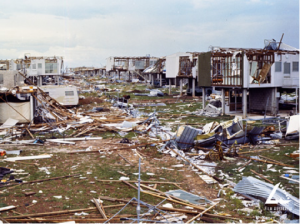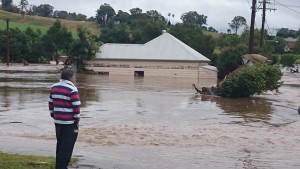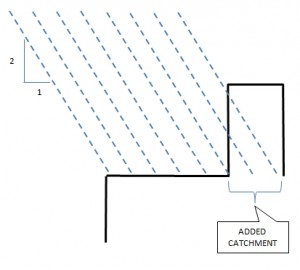
When designing box gutters to the Australian Plumbing Code AS/NZS 3500 we design them for a once in 100 year storm event.
Now, box gutters have always had a bad reputation for causing damage.
But with the advent of AS/NZS 3500 giving a concise method of designing box gutters, there should be no damage for all storms up to at least a 1 in 100 year event. (tested in the lab BTW)
Now the strange logic part. What if a hurricane or a cyclone, etc is taken as a 1 in 100 year storm event.
Our box gutter may be the least of our worries.

However just to protect one’s backside, in these days of litigation etc. we should make sure our box gutters are designed for a once in 100 year storm. (Besides which it is mandatory under the code)
Just in case we get a wind free cyclone.
Alternatively, I hear you ask, what about the recent floods in Dungog? Surely that was a 1 in 100 year event?
They got a lot of rain there. But not much wind.
So, when your house is floating down the river, are you going to sue your Hydraulic Consultant if your box gutter springs a leak?
On second thought, yea probably, these days.




